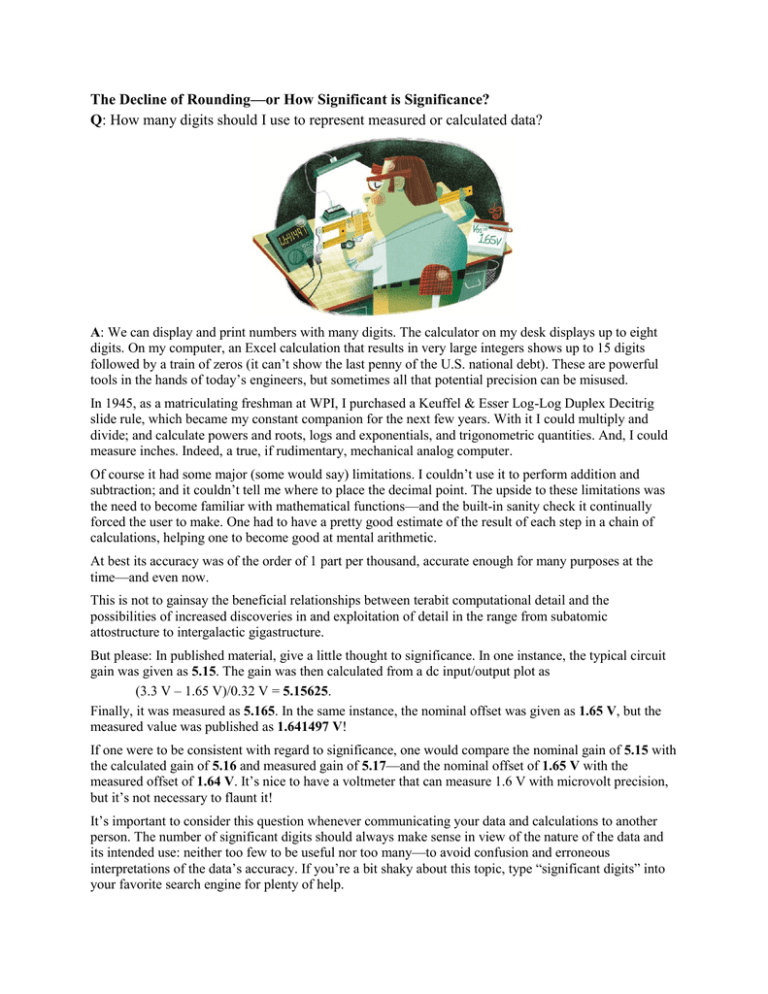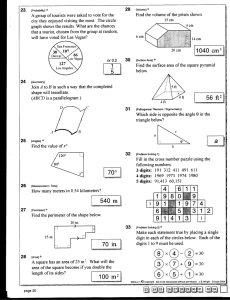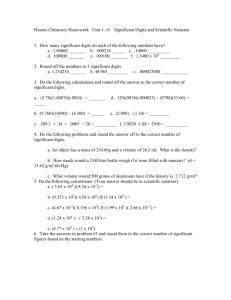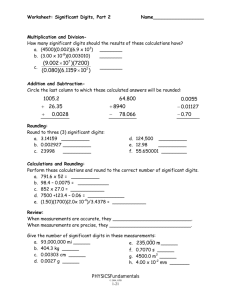The Decline of Rounding—or How Significant is Significance? Q
advertisement

The Decline of Rounding—or How Significant is Significance? Q: How many digits should I use to represent measured or calculated data? A: We can display and print numbers with many digits. The calculator on my desk displays up to eight digits. On my computer, an Excel calculation that results in very large integers shows up to 15 digits followed by a train of zeros (it can’t show the last penny of the U.S. national debt). These are powerful tools in the hands of today’s engineers, but sometimes all that potential precision can be misused. In 1945, as a matriculating freshman at WPI, I purchased a Keuffel & Esser Log-Log Duplex Decitrig slide rule, which became my constant companion for the next few years. With it I could multiply and divide; and calculate powers and roots, logs and exponentials, and trigonometric quantities. And, I could measure inches. Indeed, a true, if rudimentary, mechanical analog computer. Of course it had some major (some would say) limitations. I couldn’t use it to perform addition and subtraction; and it couldn’t tell me where to place the decimal point. The upside to these limitations was the need to become familiar with mathematical functions—and the built-in sanity check it continually forced the user to make. One had to have a pretty good estimate of the result of each step in a chain of calculations, helping one to become good at mental arithmetic. At best its accuracy was of the order of 1 part per thousand, accurate enough for many purposes at the time—and even now. This is not to gainsay the beneficial relationships between terabit computational detail and the possibilities of increased discoveries in and exploitation of detail in the range from subatomic attostructure to intergalactic gigastructure. But please: In published material, give a little thought to significance. In one instance, the typical circuit gain was given as 5.15. The gain was then calculated from a dc input/output plot as (3.3 V – 1.65 V)/0.32 V = 5.15625. Finally, it was measured as 5.165. In the same instance, the nominal offset was given as 1.65 V, but the measured value was published as 1.641497 V! If one were to be consistent with regard to significance, one would compare the nominal gain of 5.15 with the calculated gain of 5.16 and measured gain of 5.17—and the nominal offset of 1.65 V with the measured offset of 1.64 V. It’s nice to have a voltmeter that can measure 1.6 V with microvolt precision, but it’s not necessary to flaunt it! It’s important to consider this question whenever communicating your data and calculations to another person. The number of significant digits should always make sense in view of the nature of the data and its intended use: neither too few to be useful nor too many—to avoid confusion and erroneous interpretations of the data’s accuracy. If you’re a bit shaky about this topic, type “significant digits” into your favorite search engine for plenty of help.








